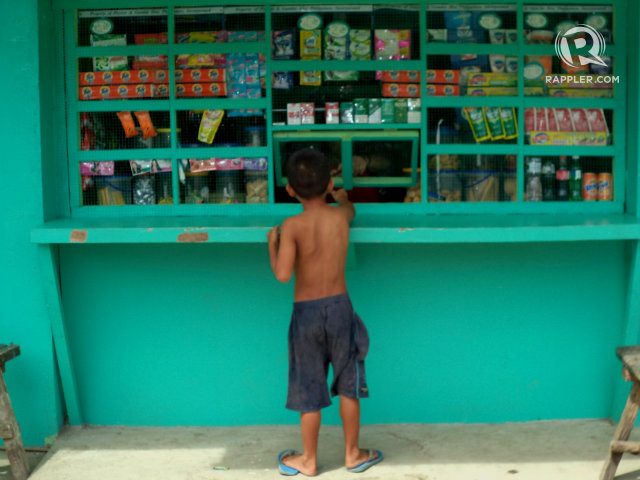SUMMARY
This is AI generated summarization, which may have errors. For context, always refer to the full article.

MANILA, Philippines – Food is among our basic needs, but what happens if you can’t afford it?
Among the poorest provinces in the Philippines, majority of the poor borrow money from retail stores to survive food shortages. This is followed by borrowing money or asking for food from relatives and neighbors, according to a World Food Programme (WFP) survey conducted from August 16 to September 5, 2015.
Meanwhile, others choose to dilute soup or porridge and reduce food portions.
Silencing rumbling stomachs with a full meal may take a while as most families are around 30 minutes or more away from wet markets and groceries. Retail stores, however, are usually only a short walk from their homes.
Overall, 62% of all households have borrowed money in one way or another. Majority of borrowings come from relatives, followed by neighbors, tindahans (stores), lending companies, informal lenders, and cooperatives.
Sulu had the highest percentage of families with borrowings at 94%, while Negros Oriental had the lowest at 28%.
Most family borrowings range from P1,000 to P5,000. The top reasons for borrowing cash is to buy food, while others also use the loan to start a business, cover education fees, and pay for medical needs.
The WFP survey was conducted by Laylo Research Strategies, covering the poorest provinces in the Philippines: Apayao, Masbate, Negros Oriental, Eastern Samar, Northern Samar, Western Samar, Zamboange del Norte, Bukidnon, Camiguin, Lanao del Norte, North Cotabato, Saranggani, Sultan Kudarat, Lanao del Sur, Maguindanao, and Sulu.
The survey had 1,600 respondents, coming from lower-income households.
Survival
More than half of respondents said they experience hunger either because their money ran out or they have no other food sources.
Their usual diet consists of rice, vegetables, and condiments. While vegetables are a staple in most homes, only a few families are able to regularly eat fruits. Meat and dairy products are also seldom included in their typical diet.
Aside from borrowing from retail stores, most of the country’s poorest depend on their own vegetable gardens as main food sources, WFP found. Popular garden picks include eggplants, alugbati, and malunggay.
60% of surveyed families harvest rice; other common harvests include corn, cassava, sweet potato, coconut, and papaya.
Some also have their own livestock like poultry, pigs, ducks, cows, goats, carabaos, and turkey. Not everyone, however, is as lucky.
| Families that do certain food security mechanisms almost every day | |
| Activity to secure food | Percentage of families |
| (Respondents allowed to give more than one answer) | |
| Buys at nearby retail store | 66% |
| Gets food from own vegetable or fruit garden | 37% |
| Goes to wet market | 11% |
| Goes to grocery | 3% |
| Asks from relatives | 3% |
| Gets food from own livestock | 3% |
| Asks from neighbors | 2% |
Provinces with the most families relying on retail stores almost daily were Masbate at 94%, Lanao del Norte at 90%, and Camiguin at 86%. Their rates are higher than the average of all provinces.
While many Filipinos enjoy eating out, this is a rare experience for other Filipinos. In fact, only 4% of the poorest households get to dine out in a month.
One-third of the surveyed families buy cooked food at least once a week, with most of their purchased food products coming from retail stores and the wet market.
When money and food are really tight, some families – like those in Sultan Kudarat – resort to eating unconventional meals such as birds, frogs, pythons, iguanas, and grasshoppers.
Generally, the country’s poorest “worry about their food situation,” the WFP concluded.
While some Filipinos are finding themselves buried in debt for purchasing gadgets, cars, or houses, these families are struggling to feed themselves for another day. – Rappler.com
Add a comment
How does this make you feel?
There are no comments yet. Add your comment to start the conversation.